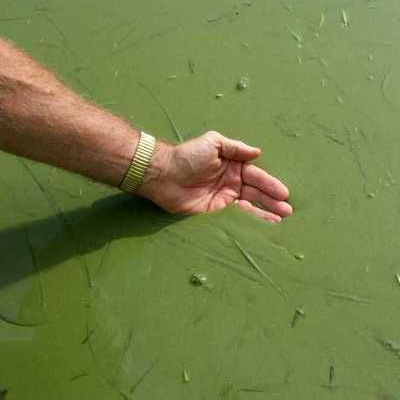It seems that every day we hear new stories of nuisance algal blooms, Microcystis cyanobacteria and water borne toxins causing our water supply to be unpleasant and unsafe to drink and making recreation impossible. This is no small or isolated problem. Grand Lake St. Mary’s near Celina, Ohio has made news and suffered from a number of toxic algal blooms making the water unsafe for years and causing substantial monetary loss to the recreational uses of the water. The latest and most unnerving story is in Lake Erie. While Lake Erie has suffered from staggering algal blooms for many years now, it wasn’t until the water supply for the City of Toledo was shut down that many people began to recognize the magnitude of the problem that has been right in front of us for a long time. It wasn’t until more than 400,000 people discovered that their water was unsafe that the issue made headline news across the state and the entire country. The fishing, boating and recreational business in the western basin of Lake Erie have lost large amounts of money resulting from the massive blooms for a number of years now. In virtually every algal bloom crisis we’ve seen the cause is the same – nutrient contamination. There are a number of sources of nutrient contamination. The same fertilizers that lead to bumper crops and beautiful green lawns on land lead to bumper crops of algae. The run-off of animal wastes from confined feeding facilities and pens add tons of nutrients to our waterways. Nutrients, mostly phosphorus and nitrogen, when applied to lawns, farm fields or stored on site are very vulnerable to being washed off and finding their way into some of our most significant water ways ultimately ending in Lake Erie and the Ohio River. The result is a massive and explosive growth of algae on a scale that is hard to imagine if you have never seen it. Nutrients carried by the Ohio River to the Mississippi have contributed to the loss of oxygen or hypoxia in the Gulf of Mexico. How have we gotten to a point where these blooms and anoxic conditions seem to be a perennial problem with no solution in sight? Are we in a world where we must simply learn to live with this cycle of contamination? The answer is a definite no! There are significant steps we can take to reduce nutrient contamination and help clean-up our waterways. One common characteristic of most, if not all, of these nutrient contamination producing areas is the large scale loss of functioning wetlands and headwater stream systems. This in turn allows large volumes of nutrient rich water to quickly reach our lakes and “fertilize” the algal blooms we now experience regularly. Not only has northwestern Ohio lost its historic Black Swamp wetlands but, in more recent times, we have destroyed and continue to destroy significant wetland areas by draining and developing them and then simply redirecting the nutrient contaminated waters directly into rivers and lakes. Instead of the nutrients leisurely travelling through wetlands and being consumed and retained by natural processes we have blindly constructed veritable waterway super highways, speeding the contaminating nutrients into our lakes. This is as true for Buckeye Lake and Grand Lake St. Mary’s as it is for Lake Erie. We have all heard the analogy that wetlands are the “kidneys” of our water ways. This is a case where the continued loss of wetlands and headwater streams has severely damaged or removed our “kidneys” and we are now paying the price for that neglect and short-sightedness. We need to take significant steps to get back to a more natural, balanced system that will protect our waters and restore the biological integrity of our waterways. Clearly we need to begin to control the deposition of nutrients on land and to develop management practices that minimize runoff and contamination. But this is not enough. In addition we need to renew our efforts to not only protect our existing wetlands and headwater streams but to also begin to restore and rehabilitate our historic and valuable wetlands to their natural functions. We need to rethink and redesign drainage ditches to stop the rapid transportation of water. The key function of nutrient reduction can be readily restored to the streams and wetlands which can once again provide serious nutrient reduction in our water ways before it reaches our lakes and large rivers. A natural stream with a healthy habitat, stream bed and a connection to its flood plain can provide a substantial amount of nutrient reduction. Likewise, a healthy, functioning wetland can sequester vast amounts of phosphorus and nitrogen that would otherwise travel directly into our lakes only to fuel yet another devastating algal bloom. We have neglected and avoided dealing with this problem for far too long. It is time to take a serious look at this situation and take the important steps needed to get us back to normal.

